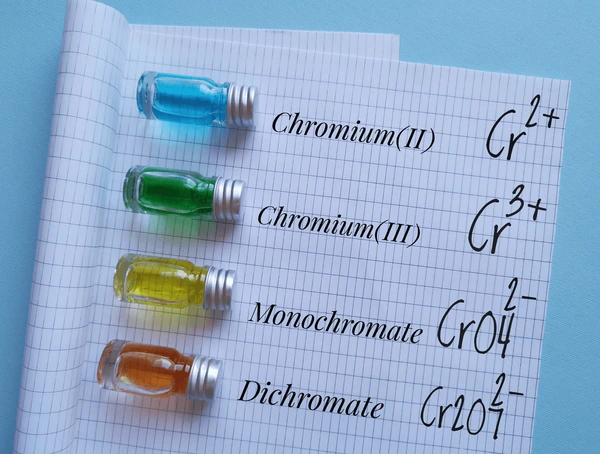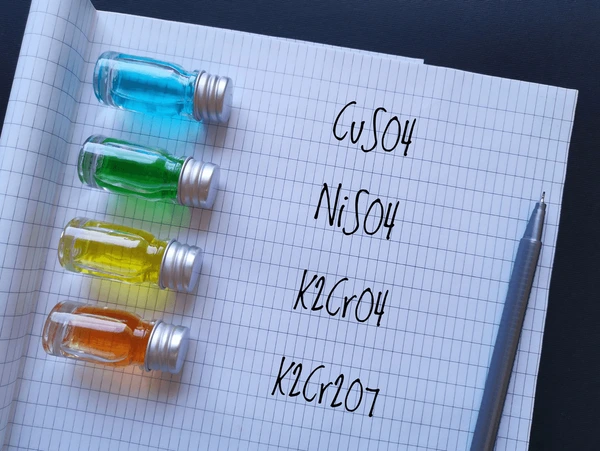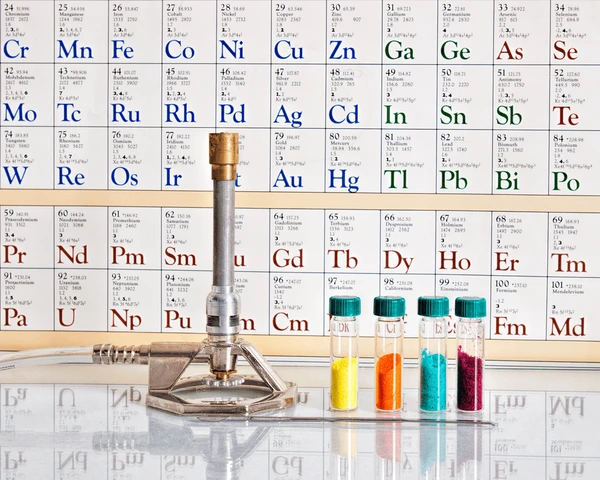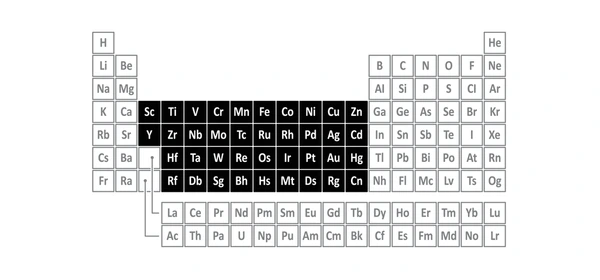Transition metals play a vital role in both chemistry and everyday life. Known for their complex behavior, multiple oxidation states, and catalytic properties, transition metals are a cornerstone of modern industry and science. This comprehensive guide explores everything from their defining characteristics to practical applications and intriguing chemical behavior.
Introduction to Transition Metals
Transition metals are elements located in the d-block of the periodic table, specifically within groups 3 to 12. They are distinguished by having partially filled d orbitals, which give rise to their distinctive chemical behaviors. Well-known examples of transition metals include iron (Fe), copper (Cu), zinc (Zn), silver (Ag), and gold (Au).
Key Characteristics of Transition Metals

Transition metals display a wide range of distinctive properties:
- Variable Oxidation States: Unlike main group elements, transition metals can exhibit multiple oxidation states. For example, iron can exist in both +2 and +3 oxidation states.
- Formation of Colored Compounds: Transition metal ions often form vibrantly colored compounds, due to d-d electronic transitions.
- Catalytic Activity: Numerous transition metals and their compounds act as highly effective catalysts. For instance, vanadium(V) oxide is used in the Contact Process to manufacture sulfuric acid.
- Magnetic Properties: Some transition metals like iron, cobalt, and nickel are ferromagnetic.
- High Melting and Boiling Points: These metals typically have strong metallic bonding, resulting in elevated melting and boiling points.
Electronic Configuration of Transition Metals
The general electronic configuration of transition metals is (n-1)d¹⁻¹⁰ ns¹⁻². For instance:
- Scandium: [Ar] 3d¹ 4s²
- Iron: [Ar] 3d⁶ 4s²
- Copper: [Ar] 3d¹⁰ 4s¹
Notably, there are some exceptions due to stability associated with half-filled or filled d orbitals, like chromium ([Ar] 3d⁵ 4s¹) and copper ([Ar] 3d¹⁰ 4s¹).
The Importance of Variable Oxidation States
Transition metals’ ability to change oxidation states is fundamental to their behavior. It enables:
- Redox reactions in both biological and industrial processes
- Formation of complex ions with ligands
- Efficient electron transfer, which is critical in catalysis
For instance, manganese can exist in +2, +4, +6, and +7 oxidation states, making it useful in redox titrations.
Transition Metal Complexes and Coordination Chemistry
Transition metals readily form complex ions with ligands, molecules, or ions that donate electron pairs. These coordination complexes follow specific geometries:
- Octahedral (e.g., [Fe(CN)₆]³⁻)
- Tetrahedral (e.g., [CuCl₄]²⁻)
- Square Planar (e.g., [Ni(CN)₄]²⁻)
Such complexes are involved in critical biochemical functions. For example, hemoglobin is an iron-based complex that transports oxygen in the blood.
Catalytic Properties of Transition Metals
Transition metals are widely used as catalysts due to their ability to:
- Adsorb reactants onto their surface
- Lower activation energy for reactions
- Switch oxidation states during the reaction cycle
Industrial examples include:
- Iron in the Haber Process (ammonia synthesis)
- Platinum in catalytic converters (automotive exhaust purification)
- Nickel in the hydrogenation of vegetable oils
Physical Properties of Transition Metals
Transition metals are known for their strong, durable physical characteristics. Some key physical properties include:
- High melting and boiling points
- Excellent electrical and thermal conductivity
- Shiny metallic luster
- Hardness and malleability
These traits make them ideal for construction, electronics, and industrial applications. Their strong metallic bonding, due to the delocalized d-electrons, contributes to their overall toughness.
Chemical Properties and Reactivity
Chemically, transition metals are just as fascinating as they are physically. They commonly form:
- Colored compounds
- Coordination complexes
- Catalytic substances
Thanks to their ability to adopt multiple oxidation states, they can serve as electron donors or acceptors in a wide range of reactions. Many industrial processes rely on transition metal catalysts to speed up reactions without being consumed.
Common Transition Metals and Their Symbols
| Element | Symbol | Main Uses |
|---|---|---|
| Iron | Fe | Construction, tools, and steel production |
| Copper | Cu | Electrical wiring, coins, plumbing |
| Nickel | Ni | Alloys, rechargeable batteries |
| Chromium | Cr | Stainless steel, plating, dyes |
| Titanium | Ti | Aerospace, medical implants |
| Zinc | Zn | Construction, tools, and steel production |
Transition Metals vs Other Metals
Transition metals differ significantly from alkali metals and alkaline earth metals. For instance:
| Property | Transition Metals | Alkali Metals | Alkaline Earth Metals |
|---|---|---|---|
| Hardness | Very hard | Very soft | Moderately hard |
| Oxidation States | Multiple | Usually one | Usually two |
| Compound Color | Often colored | Usually colorless | Usually colorless |
| Complex Formation | Common | Rare | Less common |
Biological Significance of Transition Metals
Transition metals are essential in biological systems:
- Iron (Fe): Crucial for oxygen transport (hemoglobin)
- Zinc (Zn): Cofactor for numerous enzymes
- Copper (Cu): Involved in electron transport chains
- Manganese (Mn): Essential for photosynthesis in plants
Their trace amounts are vital for life, but imbalances can lead to toxic effects or deficiencies.
Uses of Transition Metals in Everyday Life

Transition metals are integral to modern technology and materials:
- Copper: Electrical wiring, due to its high conductivity
- Titanium: Used in aerospace and medical implants
- Silver: In electronics, jewelry, and antibacterial agents
- Gold: In electronics and as a stable store of value
- Chromium: For corrosion-resistant stainless steel
They combine functionality and durability, making them irreplaceable in numerous applications.
Color of Transition Metal Compounds
The color of transition metal compounds arises from electronic transitions between d-orbitals:
- [Cu(H₂O)₆]²⁺: Blue
- [Fe(H₂O)₆]³⁺: Yellow/Brown
- [Cr₂O₇]²⁻: Orange
These colors vary with oxidation state, ligand type, and geometry of the complex ion.
Magnetism in Transition Metals
Many transition metals exhibit paramagnetism or ferromagnetism due to unpaired d-electrons:
- Iron (Fe), Cobalt (Co), and Nickel (Ni): Strongly magnetic
- Zinc (Zn): Diamagnetic, due to fully filled d-orbitals
This property is essential in data storage, electric motors, and magnetic resonance imaging (MRI).
Transition Metals vs. Main Group Metals
While both are metals, transition metals differ significantly from main group metals:
| Property | Transition Metals | Main Group Metals |
|---|---|---|
| Oxidation States | Multiple | Usually one |
| Compound Colors | Often colored | Usually colorless |
| Catalytic Properties | High | Low |
| Complex Formation | Extensive | Limited |
| Magnetic Properties | Often magnetic | Rarely magnetic |
This unique behavior gives transition metals a competitive edge in both natural and synthetic environments.
Oxidation States of Transition Metals
One of the key features of transition metals is their variable oxidation states. For example, iron can exist as Fe²⁺ or Fe³⁺, and manganese can show up to seven different oxidation states! This characteristic allows them to participate in complex redox reactions and makes them essential in fields like analytical chemistry and biochemistry.
Environmental and Health Considerations

Some transition metals can be toxic in excess or in certain forms:
- Cadmium and Mercury: Highly toxic and bioaccumulative
- Chromium(VI): Known carcinogen
Proper handling, recycling, and disposal are essential to mitigate environmental harm.
Future Outlook and Innovations
Transition metals continue to drive innovation in:
- Nanotechnology
- Green energy (fuel cells, batteries)
- Medical imaging and diagnostics
- Smart materials and sensors
Their versatile chemistry makes them key players in shaping the future of science and technology.
Conclusion
Transition metals are among the most versatile and impactful elements in the periodic table. From their colorful compounds to their indispensable industrial and biological roles, they form the foundation of modern chemistry. A deep understanding of their behavior not only enhances our grasp of chemistry but also paves the way for technological advancement and sustainable solutions.
Where are transition metals?
Transition metals play a vital role in both chemistry and everyday life. Known for their complex behavior, multiple oxidation states, and catalytic properties, transition metals are a cornerstone of modern industry and science. This comprehensive guide explores everything from their defining characteristics to practical applications and intriguing chemical behavior.
Introduction to Transition Metal
Transition metal are elements located in the d-block of the periodic table, specifically within groups 3 to 12. They are distinguished by having partially filled d orbitals, which give rise to their distinctive chemical behaviors. Well-known examples of transition metal include iron (Fe), copper (Cu), zinc (Zn), silver (Ag), and gold (Au).
Key Characteristics of Transition Metal
Transition metal display a wide range of distinctive properties:
Variable Oxidation States: Unlike main group elements, transition metals can exhibit multiple oxidation states. For example, iron can exist in both +2 and +3 oxidation states.
Formation of Colored Compounds: Transition metal ions often form vibrantly colored compounds, due to d-d electronic transitions.
Catalytic Activity: Numerous transition metal and their compounds act as highly effective catalysts. For instance, vanadium(V) oxide is used in the Contact Process to manufacture sulfuric acid.
Magnetic Properties: Some transition metals like iron, cobalt, and nickel are ferromagnetic.
High Melting and Boiling Points: These metals typically have strong metallic bonding, resulting in elevated melting and boiling points.
Electronic Configuration of Transition Metal
The general electronic configuration of transition metal is (n-1)d¹⁻¹⁰ ns¹⁻². For instance:
Scandium: [Ar] 3d¹ 4s²
Iron: [Ar] 3d⁶ 4s²
Copper: [Ar] 3d¹⁰ 4s¹
Notably, there are some exceptions due to stability associated with half-filled or filled d orbitals, like chromium ([Ar] 3d⁵ 4s¹) and copper ([Ar] 3d¹⁰ 4s¹).
The Importance of Variable Oxidation States
Transition metals’ ability to change oxidation states is fundamental to their behavior. It enables:
Redox reactions in both biological and industrial processes
Formation of complex ions with ligands
Efficient electron transfer, which is critical in catalysis
For instance, manganese can exist in +2, +4, +6, and +7 oxidation states, making it useful in redox titrations.
Transition Metal Complexes and Coordination Chemistry
Transition metal readily form complex ions with ligands, molecules, or ions that donate electron pairs. These coordination complexes follow specific geometries:
Octahedral (e.g., [Fe(CN)₆]³⁻)
Tetrahedral (e.g., [CuCl₄]²⁻)
Square Planar (e.g., [Ni(CN)₄]²⁻)
Such complexes are involved in critical biochemical functions. For example, hemoglobin is an iron-based complex that transports oxygen in the blood.
Catalytic Properties of Transition Metal
Transition metal are widely used as catalysts due to their ability to:
Adsorb reactants onto their surface
Lower activation energy for reactions
Switch oxidation states during the reaction cycle
Industrial examples include:
Iron in the Haber Process (ammonia synthesis)
Platinum in catalytic converters (automotive exhaust purification)
Nickel in the hydrogenation of vegetable oils
Physical Properties of Transition Metal
Transition metal are known for their strong, durable physical characteristics. Some key physical properties include:
High melting and boiling points
Excellent electrical and thermal conductivity
Shiny metallic luster
Hardness and malleability
These traits make them ideal for construction, electronics, and industrial applications. Their strong metallic bonding, due to the delocalized d-electrons, contributes to their overall toughness.
Chemical Properties and Reactivity
Chemically, transition metal are just as fascinating as they are physically. They commonly form:
Colored compounds
Coordination complexes
Catalytic substances
Thanks to their ability to adopt multiple oxidation states, they can serve as electron donors or acceptors in a wide range of reactions. Many industrial processes rely on transition metal catalysts to speed up reactions without being consumed.
Common Transition Metal and Their Symbols
| Element | Symbol | Main Uses |
|---|---|---|
| Iron | Fe | Construction, tools, and steel production |
| Copper | Cu | Electrical wiring, coins, plumbing |
| Nickel | Ni | Alloys, rechargeable batteries |
| Chromium | Cr | Stainless steel, plating, dyes |
| Titanium | Ti | Aerospace, medical implants |
| Zinc | Zn | Construction, tools, and steel production |
Transition Metal vs Other Metal
Transition metals differ significantly from alkali metals and alkaline earth metals. For instance:
| Property | Transition Metals | Alkali Metals | Alkaline Earth Metals |
|---|---|---|---|
| Hardness | Very hard | Very soft | Moderately hard |
| Oxidation States | Multiple | Usually one | Usually two |
| Compound Color | Often colored | Usually colorless | Usually colorless |
| Complex Formation | Common | Rare | Less common |
Biological Significance of Transition Metals
Transition metals are essential in biological systems:
Iron (Fe): Crucial for oxygen transport (hemoglobin)
Zinc (Zn): Cofactor for numerous enzymes
Copper (Cu): Involved in electron transport chains
Manganese (Mn): Essential for photosynthesis in plants
Their trace amounts are vital for life, but imbalances can lead to toxic effects or deficiencies.
Uses of Transition Metal in Everyday Life
Transition metals are integral to modern technology and materials:
Copper: Electrical wiring, due to its high conductivity
Titanium: Used in aerospace and medical implants
Silver: In electronics, jewelry, and antibacterial agents
Gold: In electronics and as a stable store of value
Chromium: For corrosion-resistant stainless steel
They combine functionality and durability, making them irreplaceable in numerous applications.
Color of Transition Metal Compounds
The color of transition metal compounds arises from electronic transitions between d-orbitals:
[Cu(H₂O)₆]²⁺: Blue
[Fe(H₂O)₆]³⁺: Yellow/Brown
[Cr₂O₇]²⁻: Orange
These colors vary with oxidation state, ligand type, and geometry of the complex ion.
Magnetism in Transition Metal
Many transition metals exhibit paramagnetism or ferromagnetism due to unpaired d-electrons:
Iron (Fe), Cobalt (Co), and Nickel (Ni): Strongly magnetic
Zinc (Zn): Diamagnetic, due to fully filled d-orbitals
This property is essential in data storage, electric motors, and magnetic resonance imaging (MRI).
Transition Metal vs. Main Group Metal
While both are metals, transition metals differ significantly from main group metals:
| Property | Transition Metals | Main Group Metals |
|---|---|---|
| Oxidation States | Multiple | Usually one |
| Compound Colors | Often colored | Usually colorless |
| Catalytic Properties | High | Low |
| Complex Formation | Extensive | Limited |
| Magnetic Properties | Often magnetic | Rarely magnetic |
This unique behavior gives transition metals a competitive edge in both natural and synthetic environments.
Oxidation States of Transition Metal
One of the key features of transition metal is their variable oxidation states. For example, iron can exist as Fe²⁺ or Fe³⁺, and manganese can show up to seven different oxidation states! This characteristic allows them to participate in complex redox reactions and makes them essential in fields like analytical chemistry and biochemistry.
Environmental and Health Considerations
Some transition metals can be toxic in excess or in certain forms:
Cadmium and Mercury: Highly toxic and bioaccumulative
Chromium(VI): Known carcinogen
Proper handling, recycling, and disposal are essential to mitigate environmental harm.
Future Outlook and Innovations
Transition metals continue to drive innovation in:
Nanotechnology
Green energy (fuel cells, batteries)
Medical imaging and diagnostics
Smart materials and sensors
Their versatile chemistry makes them key players in shaping the future of science and technology.
Conclusion
Transition metal are among the most versatile and impactful elements in the periodic table. From their colorful compounds to their indispensable industrial and biological roles, they form the foundation of modern chemistry. A deep understanding of their behavior not only enhances our grasp of chemistry but also paves the way for technological advancement and sustainable solutions.
Explain the physical and chemical properties of transition elements
Transition metals are known for their strong, durable physical characteristics. Some key physical properties include:
High melting and boiling points
Excellent electrical and thermal conductivity
Shiny metallic luster
Hardness and malleability
These traits make them ideal for construction, electronics, and industrial applications. Their strong metallic bonding, due to the delocalized d-electrons, contributes to their overall toughness.
Chemical Properties and Reactivity
Chemically, transition metals are just as fascinating as they are physically. They commonly form:
Colored compounds
Coordination complexes
Catalytic substances
Thanks to their ability to adopt multiple oxidation states, they can serve as electron donors or acceptors in a wide range of reactions. Many industrial processes rely on transition metal catalysts to speed up reactions without being consumed.
What is the electronic configuration of transition metals?
The general electronic configuration of transition metals is (n-1)d¹⁻¹⁰ ns¹⁻². For instance:
Scandium: [Ar] 3d¹ 4s²
Iron: [Ar] 3d⁶ 4s²
Copper: [Ar] 3d¹⁰ 4s¹
Notably, there are some exceptions due to stability associated with half-filled or filled d orbitals, like chromium ([Ar] 3d⁵ 4s¹) and copper ([Ar] 3d¹⁰ 4s¹).
The Importance of Variable Oxidation States
Transition metals’ ability to change oxidation states is fundamental to their behavior. It enables:
Redox reactions in both biological and industrial processes
Formation of complex ions with ligands
Efficient electron transfer, which is critical in catalysis
For instance, manganese can exist in +2, +4, +6, and +7 oxidation states, making it useful in redox titrations.
Transition Metal Complexes and Coordination Chemistry
Transition metals readily form complex ions with ligands, molecules, or ions that donate electron pairs. These coordination complexes follow specific geometries:
Octahedral (e.g., [Fe(CN)₆]³⁻)
Tetrahedral (e.g., [CuCl₄]²⁻)
Square Planar (e.g., [Ni(CN)₄]²⁻)
Such complexes are involved in critical biochemical functions. For example, hemoglobin is an iron-based complex that transports oxygen in the blood.
What are the uses of transition metals?
Transition metal are integral to modern technology and materials:
Copper: Electrical wiring, due to its high conductivity
Titanium: Used in aerospace and medical implants
Silver: In electronics, jewelry, and antibacterial agents
Gold: In electronics and as a stable store of value
Chromium: For corrosion-resistant stainless steel
They combine functionality and durability, making them irreplaceable in numerous applications.
Color of Transition Metal Compounds
The color of transition metal compounds arises from electronic transitions between d-orbitals:
[Cu(H₂O)₆]²⁺: Blue
[Fe(H₂O)₆]³⁺: Yellow/Brown
[Cr₂O₇]²⁻: Orange
These colors vary with oxidation state, ligand type, and geometry of the complex ion.
Magnetism in Transition Metals
Many transition metals exhibit paramagnetism or ferromagnetism due to unpaired d-electrons:
Iron (Fe), Cobalt (Co), and Nickel (Ni): Strongly magnetic
Zinc (Zn): Diamagnetic, due to fully filled d-orbitals
This property is essential in data storage, electric motors, and magnetic resonance imaging (MRI).
